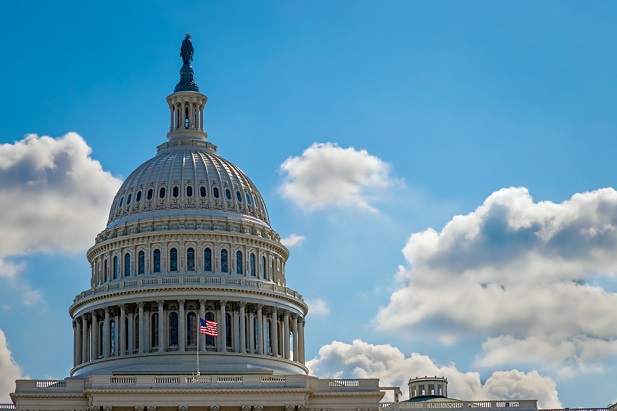 TheSECURE Act offers small businesses more incentives, moreflexibility in what they can and can’t do and, importantly, makeschanges to enable and improve individual participation. (Photo:Shutterstock)
TheSECURE Act offers small businesses more incentives, moreflexibility in what they can and can’t do and, importantly, makeschanges to enable and improve individual participation. (Photo:Shutterstock)
The SECURE Act may be the most significant piece oflegislation to affect retirement plans in years and presents amuch-needed solution to the retirement savings crisis afflictingAmericans of all ages.
|A flawless solution? Probably not. But after a bipartisan sailthrough the U.S. House, its stall in the Senate has some observers concerned. In theinterim, perfect solution or not, there’s worry we may be losing agolden opportunity to help the significant number of people whowould benefit by the SECURE Act’s provisions.
|Retirement preparedness – or lack thereof – is a huge problem inour society: A recent Federal Reserve report finds that 42%of Americans between 18 and 29, and 26% between 30 and 44 have noretirement savings at all. Older Americans – though in smallerpercentages – are similarly unprepared: 17% of those aged 45 to 59and 13% of those 60 or over have no financial cushion at all.
|A big part of the problem is that small businesses –specifically those with fewer than 100 employees – don’t typicallyoffer retirement benefits. Only 42% offer them, with or withoutinsurance benefits, research by LIMRA shows, though 40% of employers believethey are more important today than three years ago.
|It’s those organizations, in fact, that the SECURE Act isfocusing on with a variety of incentives to encourage them to bemore like their counterparts on the big business side of the fence.Our nation’s 10,000 largest companies, employing some 60% of thenation’s workers, have the resources and tax incentives that makeretirement plans – these days, 401(k)s – pretty much a standardbenefit, and one that experiences a 98% coverage rate.
|The SECURE Act offers small businesses more incentives, moreflexibility in what they can and can’t do and, importantly, makeschanges to enable and improve individual participation. Among themost significant provisions:
- “Pooled” plans. Access to the kind ofretirement plans bigger businesses can afford has been one barrier.And even so, there are fiduciary concerns. An important provisionunder the act is allowing open Multiple Employer Plans (MEPs) forsmall businesses, not limited by shared geography, trade orprofession as per the “closed” MEPs of the past. The legislationspecifically insulates businesses in pooled plans from penaltiesfor other members’ violations of fiduciary rules, addingconsiderably to their appeal.
- Increased tax credits. Businesses with lessthan 100 employees are encouraged to start a new retirement savingsplan through a boost in the tax credit to $5,000 from $500. Anothercredit, for $500, applies when the business adopts automaticenrollment for its plan. Automatic enrollment has been shown toimprove participation rates.
- New flexibility in certain rules. Variousrules have been relaxed under the SECURE Act as legislators haveattempted to address common small business concerns over meetingthe costs and administrative complexities of today’s 401(k)s. Thesechanges allow them to switch to a safe harbor 401(k) during orafter a plan year. Another provision increases the cap on the default ratefor contributions under a qualified automatic contributionarrangement from the current 10% to 15%.
- New rules on annuities. Many plans have tendedto stay away from annuities over concerns about the liabilityinvolved in choosing an annuity provider. Updated safe harborprovisions in the legislation, however, allow plan sponsors toselect annuity providers in order to offer them in a 401(k), undermore relaxed qualification parameters.
- Opening eligibility to long-time part-timers.Part-time employees – restaurant workers and retail employees, forexample – are among those who typically don’t have access to anemployer’s retirement plan, but this could change forthem under the SECURE Act. The current threshold ofcompleting at least 1,000 hours of service in a year is reduced to500 hours for any employee who completes that number of hours inthree consecutive years. This doesn’t apply to plans that arecollectively bargained and the ability to exclude workers is notaffected (providing nondiscrimination tests are passed).
- Removal of age limitations on traditional IRAcontributions. By barring contributions to traditionalIRAs after age 70.5, those who continue to work past thetraditional retirement age were limited on their savings option.This is now no longer the case.
Americans have had a long-standing problem in putting moneyaside, whether for a rainy day, future education needs orretirement. Savings trends are, however, starting to ratchet up,averaging 7.6% in 2018 after averaging 6.7% in 2016 and 2017. Better positioning forretirement really takes a savings rate of 10% at a minimum and,ideally, closer to 15%. Getting people there is the issue. Aspectsof the SECURE Act will help in a big way.
||
 David Reich is Hub’sNational President of Retirement Services, Hub International Investment Services. Registered with HubInternational Investment Services Inc., Member FINRA/SIPC and HubInternational Investment Advisory Services Inc., a SEC RegisteredInvestment Advisor. David is a recognized thought leader in thefinancial services industry with demonstrated success buildingteams, creating executable strategies and driving sustainableresults. Leading by example, he is experienced in turn-around,greenfield, and targeted-growth situations. With a passion forhelping more Americans better prepare for retirement, his teamshave delivered outsized sales growth through advisors for thebenefit of the investors, participants and plan sponsors theyserve. Dave is a frequent speaker at industry conferences as wellas mutual fund and recordkeeping companies.
David Reich is Hub’sNational President of Retirement Services, Hub International Investment Services. Registered with HubInternational Investment Services Inc., Member FINRA/SIPC and HubInternational Investment Advisory Services Inc., a SEC RegisteredInvestment Advisor. David is a recognized thought leader in thefinancial services industry with demonstrated success buildingteams, creating executable strategies and driving sustainableresults. Leading by example, he is experienced in turn-around,greenfield, and targeted-growth situations. With a passion forhelping more Americans better prepare for retirement, his teamshave delivered outsized sales growth through advisors for thebenefit of the investors, participants and plan sponsors theyserve. Dave is a frequent speaker at industry conferences as wellas mutual fund and recordkeeping companies.
Complete your profile to continue reading and get FREE access to BenefitsPRO, part of your ALM digital membership.
Your access to unlimited BenefitsPRO content isn’t changing.
Once you are an ALM digital member, you’ll receive:
- Critical BenefitsPRO information including cutting edge post-reform success strategies, access to educational webcasts and videos, resources from industry leaders, and informative Newsletters.
- Exclusive discounts on ALM, BenefitsPRO magazine and BenefitsPRO.com events
- Access to other award-winning ALM websites including ThinkAdvisor.com and Law.com
Already have an account? Sign In
© 2024 ALM Global, LLC, All Rights Reserved. Request academic re-use from www.copyright.com. All other uses, submit a request to [email protected]. For more information visit Asset & Logo Licensing.








